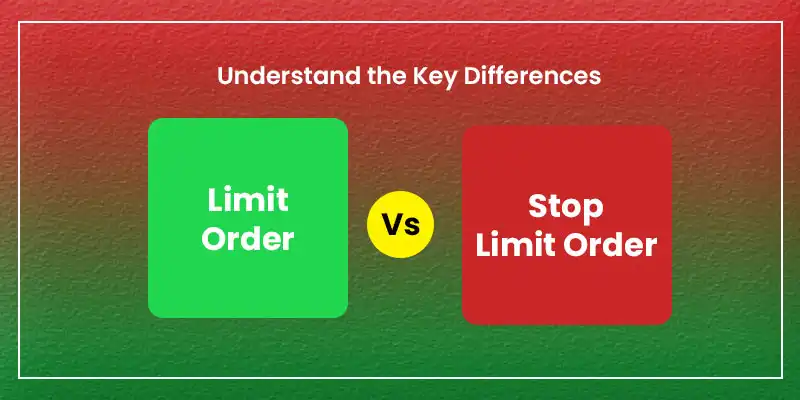Understanding limit and stop-limit orders can help market participants navigate order execution strategies more effectively.Although the two commonly used order types, limit and stop-limit orders, may sound similar, they serve different purposes for the trader. This article explains their meaning, how they work, and when traders typically use them.
Contents
- Limit Order vs Stop Limit Order
- What is a Limit Order?
- What is a Stop Limit Order?
- Key Differences:Limit and Stop-Limit Order
- How to Use Them?
- Conclusion
- FAQs
What is a Limit Order?
A limit order lets you purchase or sell a stock at a particular price or better. If you buy, the order is carried out at just the limit price or lower. If you are selling, it executes at the limit price or over.
For example, you may set a limit order at 145 if a stock is selling at 150 and you only wish to purchase it should it fall to 145. The order will be completed only if the market hits that price.
Read Also:Option Trading Terminology: Key Terms and Concepts Explained
What is a Stop-Limit Order?
A stop limit order consists of two prices: a stop price that activates the order and a limit price defining the allowable execution level. The order turns into a limit order once the stop price is reached. A stop-limit order may not execute if the price quickly moves past your limit range after triggering.
For example, you hold a stock at ₹160 and wish to restrict loss. A stop limit sell order with a stop price of ₹155 and a limit price of ₹153 could be placed. The order is activated if the stock falls to ₹155; it will only run if the price remains at ₹153 or above.
Key Differences: Limit Order and Stop-Limit Order
The main difference is how the orders are activated and carried out.A limit order is placed directly into the market order book and remains pending until the market price reaches or improves upon the specified limit price. It sits in the order book and is activated right away.
A stop limit order, on the other hand, stays inactive until the stop price is attained. Once activated, it becomes a limit order that only runs inside the specified price range.
How To Use Them?
When you wish to regulate the entry or exit price of a deal, particularly in times of market stability, use a limit order. When you have a clear goal price and are not in a hurry, it is best.
When aiming to manage downside risk or protect profits under volatile market conditions.Although it provides better price protection, it might not always be filled if the market changes too quickly.
Risk Disclaimer:Orders may not always execute due to market gaps or illiquidity.
Read Also:How To Trade In Options With Small Capital
Conclusion
Knowing the difference between a stop limit order and a limit order assists traders in making more educated choices. Though each has a different use, both order types provide control. While stop limit orders offer conditional protection in turbulent conditions, A limit order will only execute if there’s sufficient market liquidity at or better than the specified price.Understanding these order types supports structured trading decisions and helps align with individual risk tolerance.
Disclaimer
This article is meant only for education and information. It is neither a trading recommendation nor investment advice. Trading in financial markets carries risk. Before deciding on any trades, readers should speak with a qualified financial advisor.
FAQs
A limit order will only execute if there’s sufficient market liquidity at or better than the specified price.
Limit orders are more straightforward to control for beginners. Stop limit orders require more accuracy and knowledge of market conditions.

